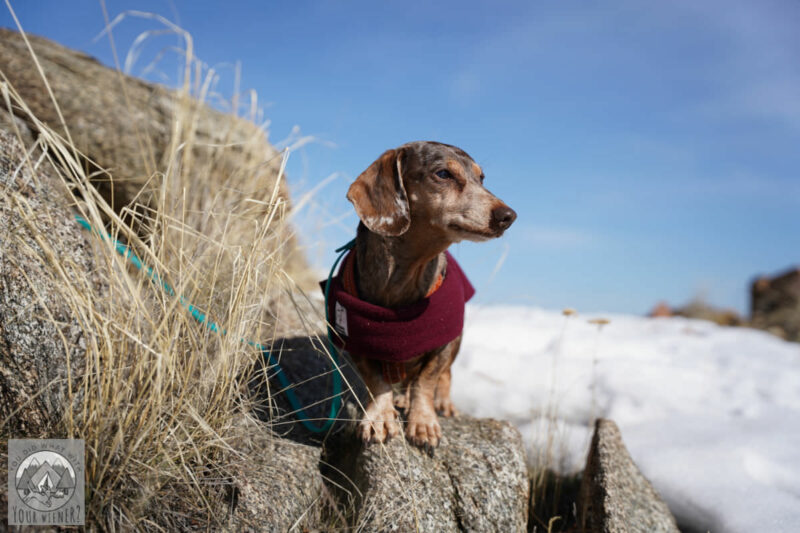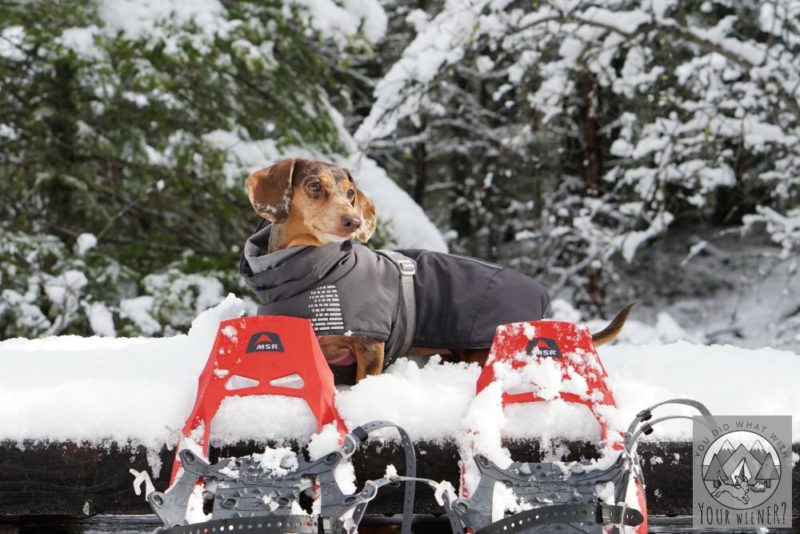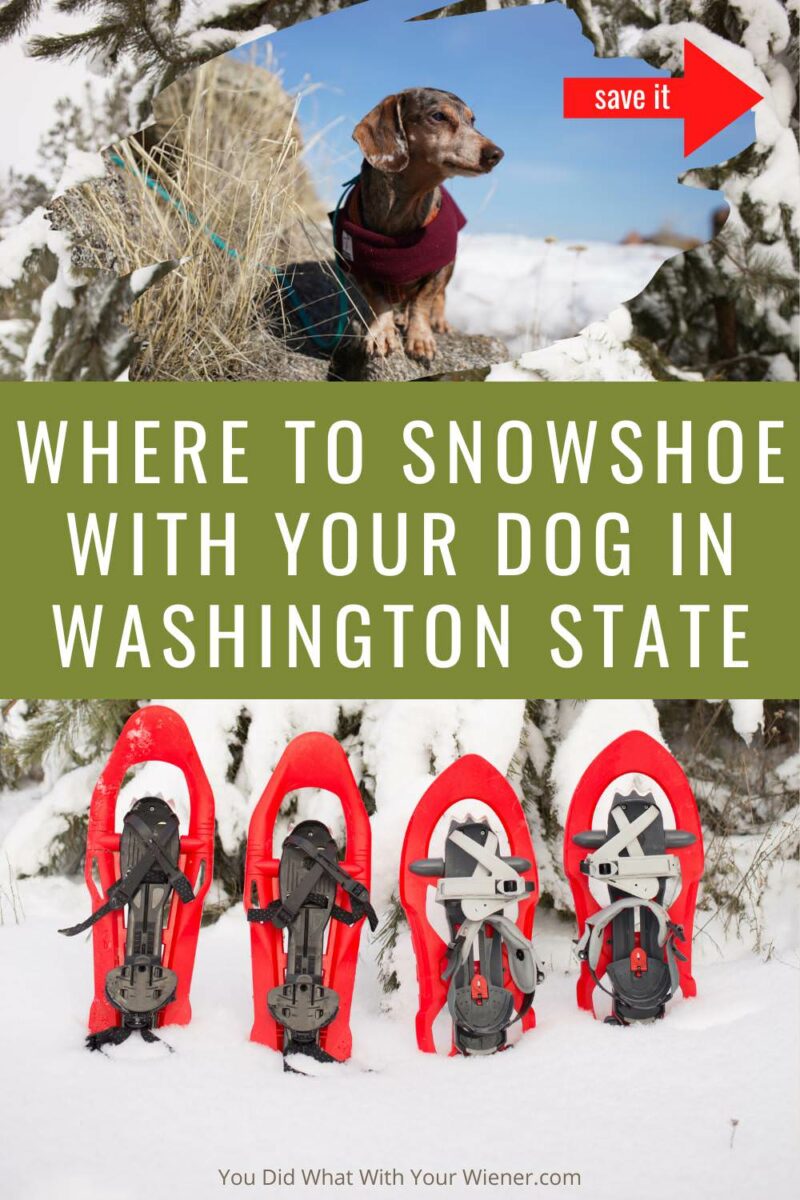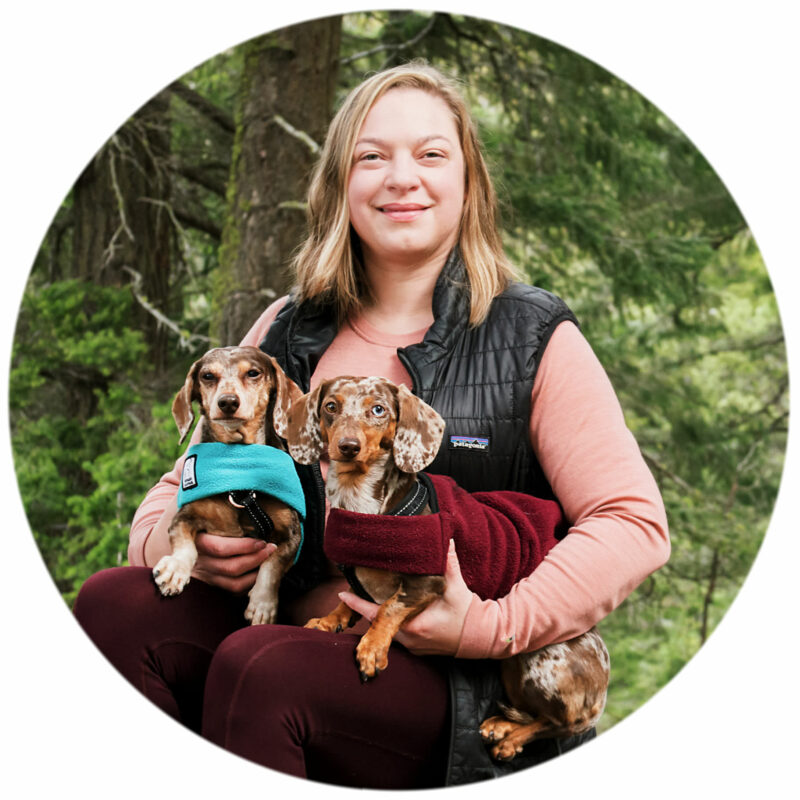Where to Snowshoe with Your Dog in Washington State
I assume you landed on this article because you already love to snowshoe with your dog in winter or you want to start doing it.
I’ve been snowshoeing with my dogs for over 10 years and have traveled all over Washington State to do it.

If you’ve never done it before, there are several reasons to start snowshoeing with your dog.
I suggest taking a beginner snowshoe class from the Mountaineers or going on a guided snowshoe tour with REI.
While dogs are not allowed to attend these classes and tours, you can go learn the skills and then take your dog with you when you feel confident enough to go on your own.
Whether you’re looking for a dog friendly snowshoe trail near Seattle, or you are coming from another area of the state, these are the places worth traveling to snowshoe with your dog.
Where Am I Allowed to Snowshoe with My Dog?
Contrary to popular belief, you can’t just find some snow, strap on snowshoes, and take off with your dog.
For example, many snow parks, officially called Sno-Parks, in Washington don’t allow dogs.
Groomed cross country ski trails generally don’t allow snowshoes or dogs because they can mess up the groomed surface.
You also have to consider avalanche danger. Many summer trails can become death traps in winter.
Generally though, you and your dog are welcome:
- On any Forest Service logging roads*
- Ungroomed (for skiing) sno parks
- Summer dog friendly hiking trails that are accessible and safe in the winter**
* A lot of Forest Service roads become groomed and ungroomed snowmobile trails in winter. You and your dog can snowshoe here but beware that some receive so much motorized traffic that it can be dangerous, especially on weekends. At the minimum, dogs should always be kept on a leash where snowmobiles are allowed.
** Always check avalanche conditions before you go. Taking, at a minimum, an avalanche awareness training is highly suggested too.
Which Washington State Sno-Parks Allow Dogs?
Some Washington State Sno-parks allow dogs and some don’t.
Dogs ARE NOT allowed at these Sno-Parks:
- Hyak (Palouse to Cascades State Park Trail)
- Erling Stordahl (Crystal Springs Sno-Park)
- Lake Easton State Park
- Cabin Creek north side of I-90!
Dogs ARE allowed at these Washington Sno-Parks (from west to east):
- Asahel Curtis (Denny Creek)
- Gold Creek
- Easton Reload
- Blewett Pass
- Pipe Creek
- Swauk Campground
- Elk Heights
- Salmon La Sac
Please remember these important rules if you take your dog to a Sno-Park.
- No dogs or snowshoes on groomed tracks
- Do not walk on the groomed trail
- Downhill skiers have the right of way
- For safety, your dog should be on leash
- Pick up and pack out your dog poop
For more information, see Central Cascades Winter Recreation Council’s page about dogs at Sno-Parks.
Which Hiking Trails Can I Snowshoe With My Dog?

Most hiking trails in the mountains turn into a winter wonderland after late November or December.
Unless the area is turned into a groomed Sno-Park, generally, dogs are allowed on any of these trails.
However, not all of them are suitable for snowshoeing with your dog.
Beware of Safety Risks
In winter, the trail conditions can vary widely.
When you hike in the summer, for the post part, the trail surface and risks don’t change. But they do in the winter.
Most notably, the potential for avalanche poses a high risk on some trails when snow is present.
For example, the Snow Lake on Snoqualmie Pass, and Granite Mountain Lookout near North Bend, cross a high-risk avalanche chute in winter and are best avoided by all but the most skillful mountaineers.
Lesser risks are encountering trees and branches that fell across the trail from the weight of snow and ice and collapsing snow bridges.
Always familiarize yourself with trail conditions before you head out to snowshoe your favorite summer hiking trail in winter.
The best places to do this are to read WTA trip reports by looking up your chosen trail and check the general avalanche risk forecast (map) for the area.
What Are The Best Dog Friendly Snowshoe Trails in Washington?
What makes the best trail will be individual to you and your dog based on, for example:
- Physical fitness (remember, snowshoeing is harder than walking, especially when breaking trail)
- Where you live
- Your knowledge about avalanches and your tolerance for risk
- What kind of snowshoes you have (ex. all-terrain or intended for groomed trails)
- What kind of scenery you enjoy
Some easy, dog friendly snowshoe trails in Washington are:
- Gold Creek Pond
- Franklin Falls
- Big Four Ice Caves
- Lake Wenatchee State Park Snowshoe Loops (only these trails)
- Salmon La Sac Campground
- Tumwater Pipeline Trail
- Wenatchee Crest Snowshoe
- Swauk Forest Discovery Trail Snowshoe
- Riverside State Park (Spokane) – Bowl and Pitcher Snowshoe
- Riser Lake Loop (Winthrop)
Some moderate and difficult dog friendly snowshoe trails are:
- Artist Point Snowshoe
- Skyline Lake Snowshoe
- Kendall Lakes Peak Snowshoe
- Teanaway Butte
- Hex Mountain
- Cooper River
- Bumping Lake Ski and Snowshoe Trails
- Mount Tahoma Trails High Hut (dogs are not allowed inside the hut)
- Tieton Pond Snowshoe (Yakima)
The description for all of these can be found on the Washington Trails Association (WTA) website.
Protecting Your Dog While Snowshoeing
Snwoshoeing or hiking with your dog in the snow is not the same experience as hitting the trails in the spring or summer.
In the winter, temperatures can drop below freezing.
Frosbite and hypothermia are real risks that can have physically damaging or deadly results.
Also, protecting your dog’s paws is important because snow can be abrasive like sandpaper and sharp ice can cut paws.
To hemp revent injury or illness when your dog is winter hiking with you:
- Get your dog a good jacket if they can’t stay warm enough on their own.
- Check your dog’s feet regularly for cuts and abrasions on paw pads.
- Consider that your dog might need boots (I’m not a fan but sometimes they are necessary) or help protect your dog’s paws like paw balm like Musher’s Secret.
- Consider bringing something for your dog to stand on so that they don’t lose body heat through their paws when you take a lunch break
Final Thoughts
The outdoor fun doesn’t have to stop when the snow starts falling.
Snowshoeing is a great winter activity for you and your dog and there are a lot of places in Washington where you can do it with your dog.
Typically, with the right preparation, dogs of any size can do it. Check out my tips for snowshoeing with a small dog.
There are plenty of dog friendly snowshoe trails close to Seattle but also plenty of opportunities further outside of the city if you want some solitude.
Just pick one and go have fun!


About the Author
Hi, I’m Jessica. I’ve been studying the Dachshund breed since 2007, owned 3 of my own, and shared in the lives of thousands of others through their owner’s stories. When I’m not sharing what I know on this blog, you can find me hiking, camping, and traveling with my adventurous wiener dogs.
